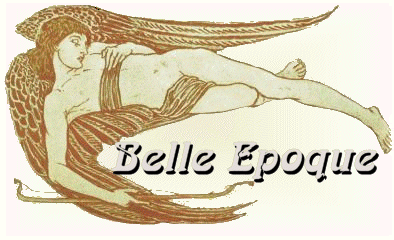The Belle Epoque in Europe
England/USA: First Experiences
England
In January 1889, William Friese-Greene (1855-1921) made a film of about 100 m with a machine he had developed himself. Within the same year, he got the patent for his invention, but instead of profiting of it commercially, he started to experiment with sound and colour films so that he missed the further development. Therefore, he could not figure in history as the founder of the English motion picture.
This is rather the merit of Robert W. Paul (1869-1943) who - just like Messter in Germany - produced projectors, and similarly to Messter he made films in order to be able to serve his clients with presentation material. In 1896, for example, he produced the films Rough Seas at Dover und The Soldier's Courtship. In 1910, he stopped film making in order to construct optical instruments.
James Williamson (1855-1933) and George Albert Smith (1864-1959) were originally photographers at the beach of Brighton. Because of their former profession, they preferred to film in the open air in front of natural backgrounds. Therefore, they could easily and often change their scenes, and their films had the effect of vivacity which influenced the narration styles of foreign directors. In his film Attack on a China Mission, Williamson already used such dramatic narration styles, while Smith was experimenting with studies of facial expressions in close-ups which he combined lateron with other shootings. In As Seen Through a Telescope for example, there's a lewd man observing a couple through a telescope. Smith shows in a close-up how the lover's hands tie the woman's shoe-laces; in the next shooting you see the lover beat up the voyeur. These changes of shootings became a natural part of Smith's narration style.
Williamson and Smith also retired early, in 1903, from filming. There was nobody to pick up their ideas and continue their work, so that - besides some few commercial successes by less important slapstick productions - the English motion picture remained rather insignificant until the end of the twenties when Hitchcock appeared on the screen ...
USA
In 1891, Thomas Alva Edison (1847-1931) produced in his studio the first motion pictures, and in 1895, a first public performance took place in New York. But during the first years of the new century already, the centre of the movie production was transferred from the east to Hollywood.
Unlike the European movies, the Americans did not start with magic and fairy tales but at once with realistic scenes. One of the first movies was The Life of an American Fireman (1902) directed by Edwin S. Porter (1870-1941). It is about five minutes long and shows how the firemen come to save the people out of a burning house. The next year, Porter made the movie The Great Train Robbery (1903) and so he invented the most successful and most typical genre of the American motion picture, the Western.
It was Thomas Harper Ince (1881-1924) who continued to direct movies of that genre and from 1911 onwards, he made about a hundred movies within short time; he especially became known for civil war dramas like Custer's Last Fight (1912) and The Battle of Gettysburg (1914).

The most important influence, however, on the development of cinema all over the world had a man who directed his first movie in 1908 and is supposed to be the first true cinematographic artist: David Wark Griffith (1875-1948). He made some hundred movies altogether, but his glory was due to one work only, the incredibly grandiose civil war epic The Birth of a Nation (1914/15). His even more ambitious movie Intolerance (1916) which he had produced himself and which nowadays passes for being another masterpiece, had not had the success he had hoped for and left him a couple of debts.
Just as in England, this era was rather determined by funny, burlesque slapstick comedies, and their master director was Mack Sennett (1880-1960), who produced more than 1,000 movies and, by the way, in 1913, discovered the talents of a certain Charles Spencer Chaplin (1889-1977). But the really great comedies, however, of the geniuses Chaplin, Keaton, Lloyd, Laurel and Hardy etc. have been made after the First World War only.
